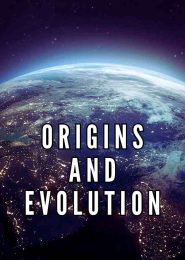Ape to Man (2005)
Ape to Man is a dramatized documentary that dives into the scientific community’s tireless quest to uncover the missing link in human evolution—the bridge connecting our ape ancestors to modern humans.
It’s a journey through time, exploring pivotal discoveries and their impact on our understanding of our own origins.
In 1856, German schoolteacher Johann Fuhlrott recognized that a cave-discovered skull and leg bone differed significantly from those of normal humans.
These fossilized bones, dating back 40,000 years, belonged to Neanderthal Man. Neanderthals used stone tools for opportunistic hunting, harnessed fire, and lived in caves. Their stocky build, large brain, and advanced skills set them apart.
In Java, Indonesia, Eugène Dubois unearthed a fossilized skull with a brain cavity seemingly too large for an ape.
This discovery revealed Java Man (Pithecanthropus erectus), who lived around 800,000 years ago. Despite initial skepticism, Dubois’s find provided crucial evidence.
Charles Dawson’s 1912 discovery of a large-skulled, ape-like fossil—Piltdown Man—initially aligned with the scientific community’s perception of the missing link.
However, it took 40 years to expose Piltdown Man as a forgery.
In Ethiopia, scientists found the skeleton of Australopithecus afarensis, affectionately known as Lucy.
Lucy’s ancestors thrived in forested environments for 50 million years, primarily consuming fruit. Lucy’s adaptation to bipedal walking across grasslands freed up her hands for tool use.
Matthias Krings from Munich University extracted 40,000-year-old DNA from Neanderthal bones, providing insights into our ancient relatives’ genetic makeup.
This documentary weaves together these milestones, revealing the intricate tapestry of human evolution.
From Neanderthals to Lucy, each discovery underpins our understanding of our species’ remarkable journey. It’s not just a documentary—it’s a reminder to our preservence and curiosity, seeking more than just answers, a exploration of our shared past.




